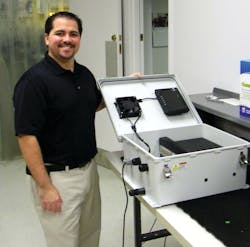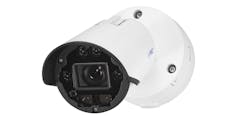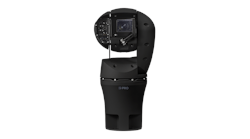Challenges In Selling Video Surveillance
Video surveillance has evolved into an essential technology for electronic security. Cameras are useful in all aspects of security, life safety and access control. Cameras installed on-site perform two vital functions: deterring would be miscreants and re-assuring occupants that someone is keeping track of the situation.
Live surveillance leverages resources, enabling less manpower to achieve greater real-time patrol of multiple areas, and freeing up staff for targeted deployment and other management activities.
The latest networking technologies greatly enhance the wide area functionalities of surveillance cameras.
Live surveillance also provides an additional authentication factor by enhancing an alert or exception alarm into a data-rich visual report of an individual or event.
The latest on-board camera processing and video management software help to maximize data storage capacities, throttle bandwidth demands, and provide alerts if inappropriate behaviors are detected in the field of view, if a camera or system malfunction occurs, or simply to trigger recording and multistreaming if motion is sensed by a camera.
Recorded video provides a record of who was where and when. Video archives are counted on in criminal forensics, and have become a part of our digitally driven and enhanced society.
As is the case with most markets in which we locksmiths engage, the landscape has changed drastically and continues to change beneath our feet.
Public Perception: Thanks to aggressive on-line marketing, services such as Youtube and mobile appliances, and younger generations weaned on their video-enabled environments; the demand for video is there and growing.
Supply Channels: Video surveillance equipment is readily available through retail, wholesale, brick and mortar, and online vendors. Video hardware, as is the case with most commodities, electronics in particular, is manufactured offshore. The variables are Quality, Technology, Customer Support & Price. These are the common differentiators, and the locksmith must balance each to deliver his customers the best value in whatever market in which he competes.
Technology: Video surveillance technology is usually divided into two broad categories - analog and digital. Some Locksmith Ledger readers may have been in the business long enough to recall the early days of video surveillance, when it was referred to as Closed Circuit Television (CCTV). We still use this term, as it still applies; we view the camera images on a ‘television’ (a monitor); and we interconnect the camera and monitor over a cable (the circuit). That’s about where the analogy ends. The television is likely to be a flat screen, and circuit connecting the camera and the monitor is as likely to be a UTP cable, a piece of fiber, or the World Wide Web (that’s what they used to call the Internet)
Competition: The electronic security market has been invaded! Interlopers include Big Box Stores peddling DIY products, electricians trying to expand, network cablers realizing their market is saturated and has gone wireless, and telecommunications guys looking for additional work.
Again the differentiators come into play and they are nothing new to the locksmith. Quality, Technology, Customer Support & Price. It’s all about the art of balancing these to match your customer’s requirements for each specific application.
Applications: And the good news is that the demand for high technology, professionally installed and serviced video surveillance equipment is exploding despite an otherwise mediocre business environment looming over use for the last few years, opening doors for locksmiths and security providers.
Supply Chain Partners: New marketing channels are emerging constantly. One of my recent finds is Optiview, an independent video manufacturer and distributor based in Jacksonville, Fla., who provides its engineering support and products to dealers to wherever the Internet reaches.
Although full-line distributors abound and surely are a vital link in the locksmiths’ security supply chain, this new category: the manufacturer/distributor is a new breed of vendor who specializes in diligently selecting products to offer, essentially remanufacturing each product so it meets their own exacting requirements, customizing firmware and configuring systems on a per customer basis.They then follow up with an aggressive team approach to customer and technical support as well as dealer training.
Q&A: Optiview's Gary Bilbeau
To find out more about Optiview and the video surveillance market, Locksmith Ledger interviewed Gary Bilbeau, sales director for Optivew. Following are the Ledger’s questions and Bilbeau’s answers.
Can you please tell us about Optiview’s history?
Optiview was started in 1999 by the company’s president, Dave Page. Dave has a background in low-voltage electronics and had been working in the field as a camera and alarm system installer. Optiview also created its first website at that time. Many years, websites, and warehouses later, we are an extremely successful business selling wholesale CCTV equipment throughout the U.S. and territories.
Who are your customers?
Optiview customers range from small installers and resellers to large Fortune 500 companies.
What products do you offer?
As a distributor, Optiview offers all items needed in the CCTV world including DVRs, NVRs, analog and IP cameras, coax, cat5, cat6, fiber, and related items.
What services do you offer?
We can help with the overall security application design and will make sure you select the right equipment for the job. We pride ourselves on our technical support and service after the sale.
There are lots of distributors in the marketplace.. What differentiates Optiview from the competition?
We don’t just sell products; we sell solutions that work. Our sales staff is extremely knowledgeable on the product line and we will help our customers design a complete solution. Also, we stand behind all products sold and offer tech support on our full line of items. Because we have so much equipment in the field, our tech department now has more employees than the sales department. Tech Support will help with the day to day operation of the equipment and even help setup viewing your DVR/NVR remotely and on your smart phone.
What is the biggest challenge facing the video dealer. What do you consider the most important trends in video surveillance industry, and how is Optiview participating in them?
The biggest challenge for the dealer is still price vs. quality. So many customers now see the CCTV equipment inside of Costco or Sam’s Club and feel that is what they want. Truthfully if the equipment was any good, the retailer would be using it for their own security purposes.
It’s up to the security professional to explain that yes it is a basic CCTV system but it will have limitations. Here are some of the questions to ask when comparing products.
- Is it Mpeg4 or H.264 compression?
- How much hard drive capacity?
- What’s the resolution of the cameras?
- Are the connections universal or proprietary?
- Can you get support from the company you’re purchasing from?
Trends are scattered right now. A lot of people are still offering analog (BNC) products while there is a big movement to IP happening right now. IP offers megapixel resolution and better wireless solutions. Optiview has been researching IP products and solutions for years now and just this year rolled out a comprehensive IP product line with products that work dependably and are affordable. Many of the big jobs we quote nowadays are IP based.
What are your most popular products?
Our most popular products now are embedded DVRs as they offer the most bang for the buck. Embedded DVRs allow the users to record, retrieve data, view remotely, and all of our embedded machines now offer smart phone support. High resolution analog cameras are also very popular right now as they are a very good value.
What is the product in the NEMA enclosure Dave Page was embracing in the showroom?
We offer a full line of weatherproof video server and DVR solutions. All of the boxes are Nema3 rated and have POE built in to add wireless antennas. We offer a 1.5 mile antenna and a 3 mile antenna at a very affordable price. The boxes are offered with our own equipment but we also allow the dealer to build-in other brands of video encoders such as Vivotek and Axis.
Now we offer a full line of DVRs that we can build up to 16 camera inputs.
All of the boxes come with CMS software allowing the customer to connect to a minimum of 64 cameras and view them simultaneously or through video groups. This means you can have indoor DVRs as well as weatherproof boxes scattered throughout one job site or throughout the world, and our software allows you to bring them all back together as one system.
This is one of the key selling points to our solution. We have been told by our dealers is being able to offer a true plug and play solution right out of the box is a important advantage. The weatherproof series offers a safe and secure enclosure for the DVR as well as the power supply and monitor.
Although the box is marketed as a weatherproof solution, we have many customers using them for plug and play indoor use as well.
What do you think about HD analog?
OPTV: HD analog is not ready. HD-SDI claims to be an open platform that allows you to use one manufacturer’s DVR while using another manufacturer’s camera. We have tested many brands of cameras and DVRs that claim to support HD-SDI. In our testing, we found the compatibility to be hit or miss.
The way HD is being sold to the consumer is to add HD to your existing system and use the existing infrastructure. But we have found there is a huge limitation on the distance of the COAX runs. The longest run we tested could only go about 150 feet and many couldn’t even go that far.
For more information on Optiview products, visit www.optiviewusa.com.
Tim O'Leary
Tim O'Leary is a security consultant, trainer and technician who has also been writing articles on all areas of locksmithing & physical security for many years.






